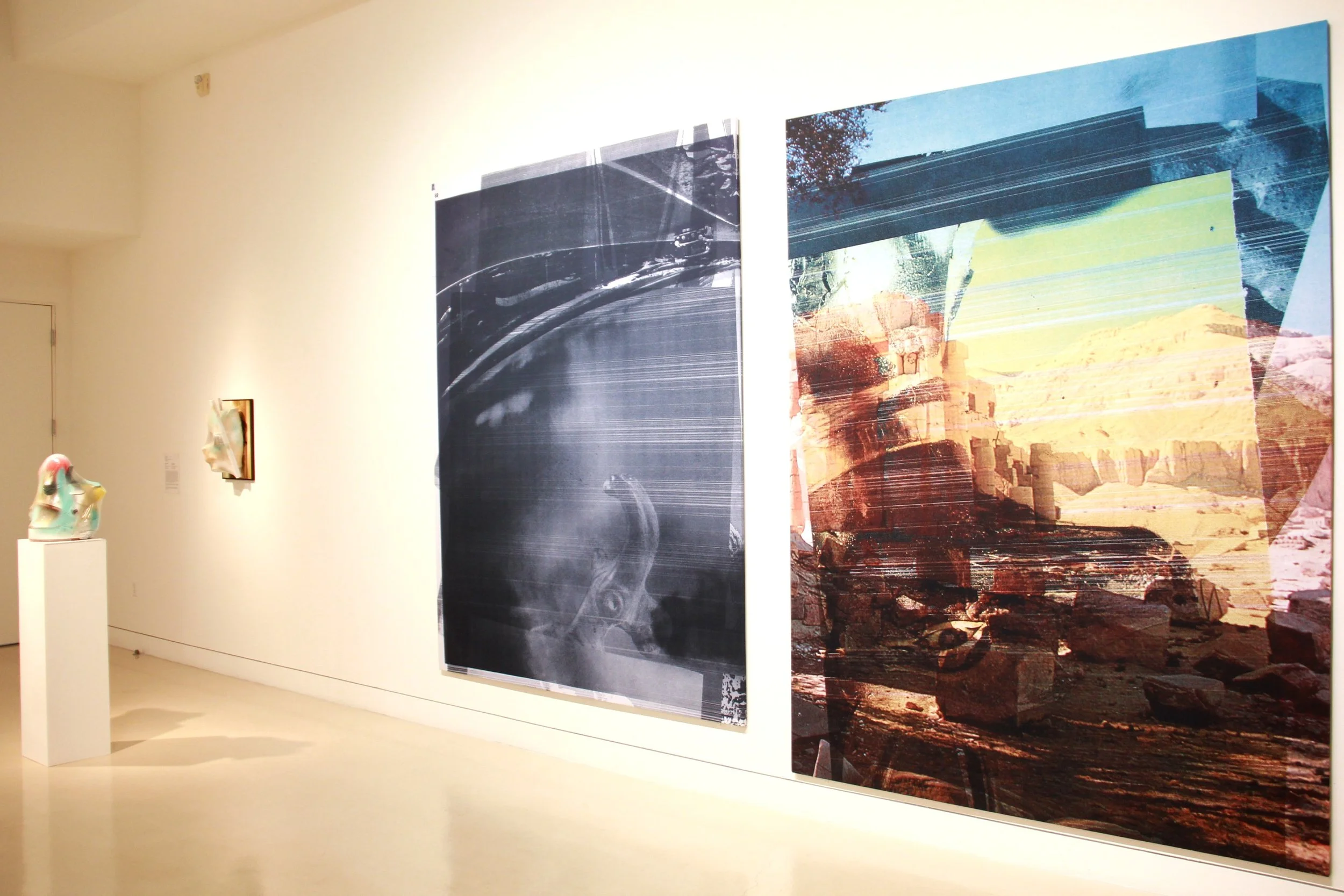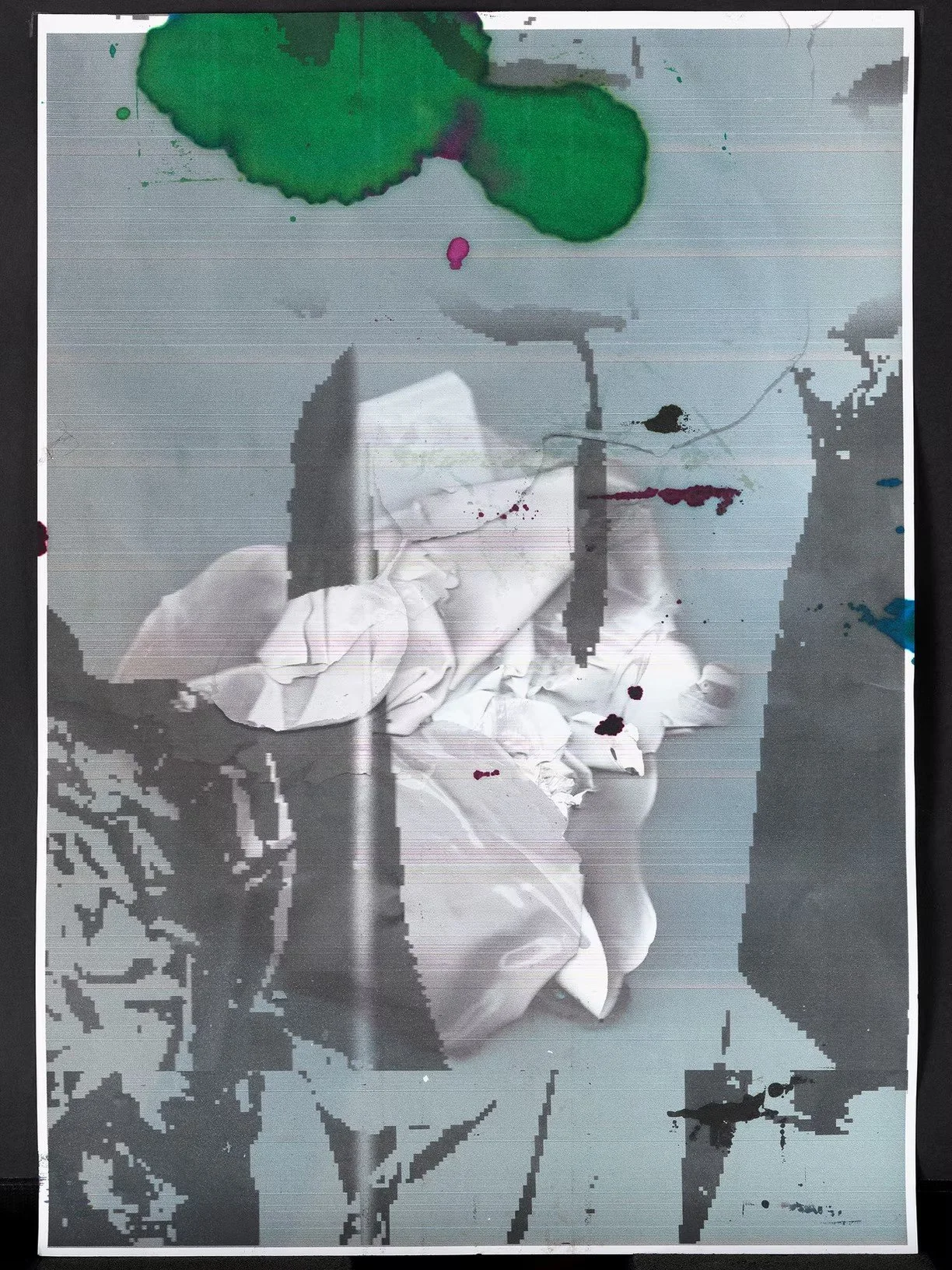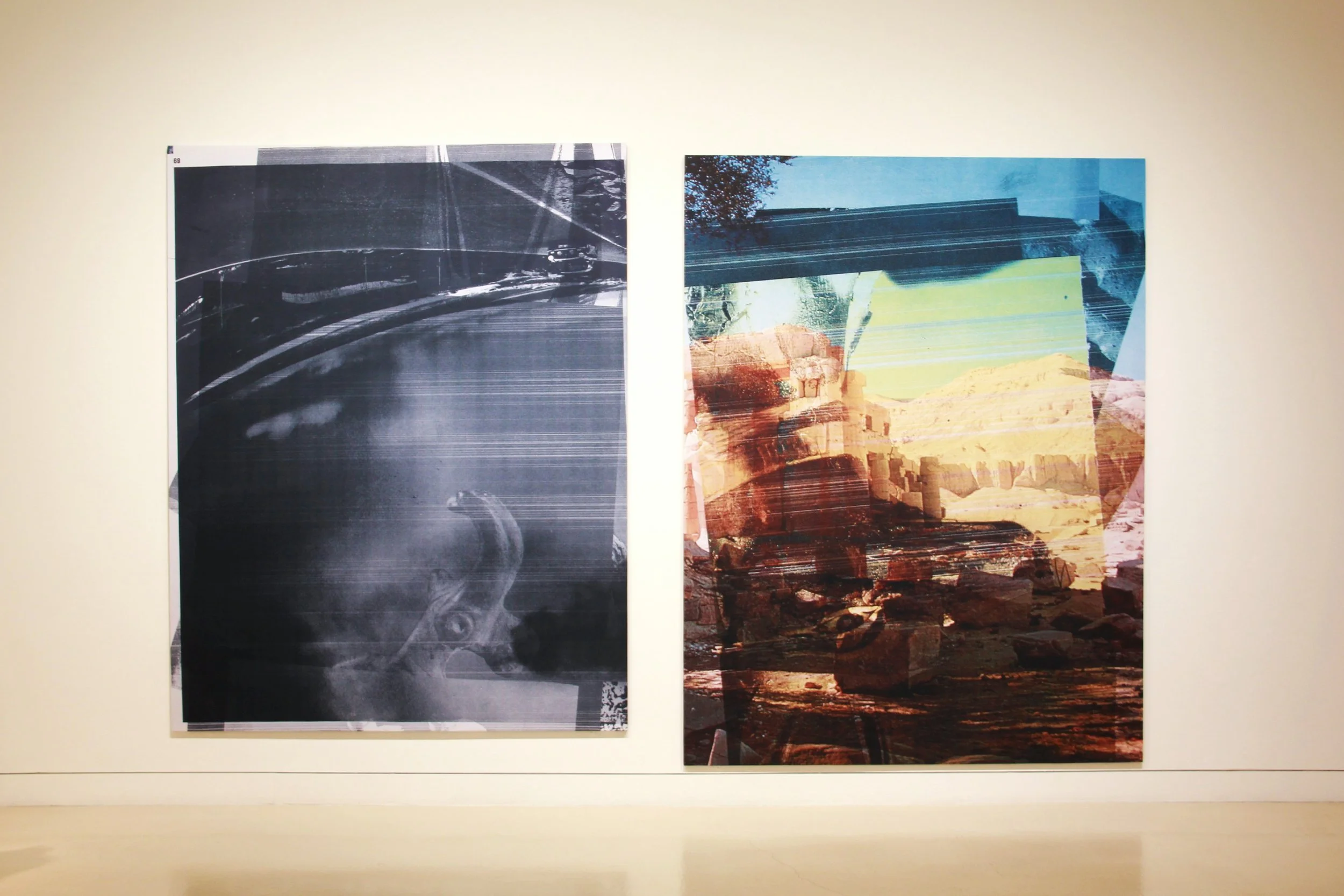Peter Lamb: Artistic Ignition
Peter Lamb sublimates the process as action.
In your own words, could you please describe your artistic practice and the themes therein?
I see myself as a painter primarily although I mix in photography, collage and photoshop.
I'm most interested in the theme of ignition, how can I get momentum and by which means.
How has your background inspired your work?
Perhaps my working class background played a part. I knew no one growing up that was an artist or creative type and this I think gave me the naive optimism to not be entitled to have an art career, to not expect anything and keep going.
What does your work aim to say?
As Harry Dean Stanton once said ‘there is no self’.
I was always interested in recording the edges of the studio, the walls, floor, ceiling.
Shell, 2024
Inkjet print on book-page, card, acrylic paint, crayon, ink
42 x 28cm
Courtesy of the Artist
Your work feels like an exploration into what it means for an artwork to exist and be seen, as in, what does it mean for a re-purposed photograph to be inserted and blended into a new context.
The photograph is like mirroring back a new painting ground. A perpetual woven in reflection where you lose sight of any sort of beginning or end.
I read in the Essay by Matthew Hearn accompanying 'Redoubling' solo exhibition at Torrance Art Museum, “Since 2011 he has been photographing what he has described as ‘the peripheral fall out from painting’.” I would love to know what led to this shift in work.
I think I was always interested in recording the edges of the studio, the walls, floor, ceiling. The paint splatters and the aftermath of the activity of painting. Photography sped things up to new tributaries. Just sitting 9-5 rendering a painting seemed too much like transcription to me and a waste of time.
I see the work as always in a dual state, two elements that either collide or fuse together…
Unable to Recognise Themselves, 2022
Dye sublimated print on display fabric, aluminium subframe
280 x 200 x 3cm
Courtesy of the artist
Your work is created by layering images of scenery, machines, tools, art media and reproduces this overlay that evokes movement and energy yet they feel snapped into place on the wall. What is your process to ultimately reach this balance in your work?
The wall or picture frame is a temporary stopping place. The physical nature of the materials - the synthetic prints and subframes - can be simply broken down and shipped from place to place. Like pop up tents. So elements are collapsed, reanimated and reordered. It's like patting your head and rubbing your belly, throwing in a hop and that’s the kind of balance I’m searching for. Or perhaps it's like a perpetual turning left.
During the time I got to spend with you, we discussed your work at Torrance Art Museum in depth and you described it similarly to a piston, in that your work holds both action and in-action, one creating the other’s state of motion, one after the other. Could you share a bit more on this explanation?
I see the work as always in a dual state, two elements that either collide or fuse together, creating a friction with a possibility of a third outcome. Kind of like an engine achieving ignition. There follows a flow or riff for a period of time before sputtering to a stop again. But with new information attached, ready to be utilized.
Exit (Diptych), 2024
Dye sublimated print on display fabric, wood
104 × 169 inches
Special Relationships
Torrance Art Museum
You described Exit (Diptych) on show at Torrance Art Museum as on the left evaporation and the right earth. Could you share the elements of this work and those themes in a little depth?
Again it's the duality of elements, painting and photography, left and right, earth and air.
I often pick simple words like earth, water, air, stone to depict a feeling of something that seems immovable, unreachable, empty or dead in some way. The challenge I give myself is to see if I can reanimate the elements again. To pump air or a breath back into them.
In ’Exit’ the right side ‘earth’ element features images taken from a book of ancient sculptures suggesting weight and something fixed. The left side is an image of an assyrian sculpture and also an upturned motor car that, along with further collaged imagery, looks like a trigger and gun when connected to the right side panel. I liked the feeling and possibility of that energetic movement out of the picture frame, like the painting is leaving itself or in transition. The black and smokey evaporation of the left panel suggests a move to a complete disappearance of the painting itself and hopefully a feeling of renewal. Again the piston is at play with the panels operating front to back (evaporating) and left to right (igniting).
What would you like audiences to feel, ponder, or gain from viewing your work?
Like an endless fairground ride or film that you are able to join in, hop on and hop off. That the work is conversational and open ended.
See more of Peter Lamb's work at PeterLamb.org and follow him on Instagram @PeterLamb30.
A special thank you to Torrance Art Museum for its continued support of these artists and allowing this discussion. To learn about upcoming shows visit TorranceArtMuseum.com.
Cover image:
Exit (Diptych), 2024 (Detail) - On view at TAM, Courtesy of the artist




